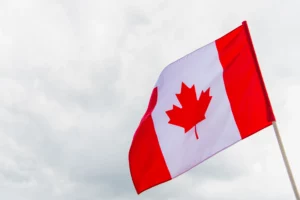Global Weaving Techniques: Uniting Cultures Through Traditional Craftsmanship

Updated On: April 22, 2024 by Eman Sameh
Weaving techniques are the thread that connects communities and cultures across the globe, a true testament to the shared heritage and creative spirit of humanity. From the intricate tapestries of the Middle East to the vibrant kente cloth of Ghana, each fabric tells a story of its people, imparting lessons in history, identity, and solidarity. These textiles are not just materials but mediums through which artisans share their narratives with the world, creating a fabric that binds us all with threads of understanding and appreciation.

The craft of weaving stretches back to the earliest civilisations, where it began as a fundamental skill for producing necessary items and gradually evolved into a sophisticated form of expression. Different cultures have developed distinctive techniques and patterns, which have been passed down through generations. These traditions are not only preserved but continue to evolve, echoing the socioeconomic and political landscapes that shape their existence. By examining the rich tapestry of global weaving practices, we gain insight into the past and present of cultures that may appear dissimilar on the surface yet are woven together by the universal human need to create and connect.
Historical Context of Weaving

Weaving forms a fabric of history, interlacing cultural heritage with the evolution of human societies across the globe. This craft has been pivotal in the development of civilisations, offering insight into the socioeconomic and artistic influences of the past.
Evolution of Weaving Techniques
Weaving techniques have advanced from basic hand-operated looms to intricate mechanised systems. Our ancestors crafted looms from wood and other available materials, experimenting with different fibres to create textiles. In diverse cultures, these methods varied and evolved, influenced by available resources and exchanging knowledge through trade and interaction. The complexity of patterns and methods employed by different societies is a testament to the ingenuity and adaptability of human craftsmanship.
Significant Archaeological Discoveries
Archaeologists have unearthed artefacts that map the story of weaving through meticulous excavation and study. They have also discovered loom weights in archaeological sites, granting us a glimpse into how fabrics might have been created thousands of years ago. Notable archaeological finds include remnants of dyed fibres, spindle whorls, and evidence of various dyeing techniques, providing us with a tapestry of information regarding ancient practices.
Weaving in Ancient Civilisations
Our cultural heritage owes much to the weaving practices of ancient civilisations. The Egyptians, renowned for their linen, treated it as a symbol of light and purity. In South America, the Incas used textiles as a form of communication. Both of these civilisations demonstrated an advanced understanding of weaving, indicative of its prominence in societal structures and the economy. These ancient textiles, some preserved well enough to still glean their vibrant colours and intricate designs, offer us profound connections to our past.
Weaving as Cultural Expression

Weaving, across cultures, serves as a profound conduit for expression. It encapsulates key facets of identity and tradition, embodying spiritual beliefs and fostering community cohesion.
Symbolism in Textile Designs
Textile designs often carry rich symbolism. Patterns and colours are not arbitrary; they narrate stories, denote social status, or confer blessings. For instance, in some African communities, motifs woven into Kente cloths are replete with symbolic meanings, each telling a distinct story or showcasing a specific proverb. Similarly, intricate tartan designs among Scottish clans are visually distinct identities, with each pattern representing familial lineage.
Ceremonial and Spiritual Roles
In many cultures, textiles play crucial ceremonial and spiritual roles. For example, in native Andean societies, textiles are integral to rituals, believed to bridge the mortal world with the divine. In Indian traditions, the art of weaving is deeply interwoven with religious practices, often creating garments specifically for religious deities or ceremonies.
Traditional Weaving Communities
Preservation of weaving techniques is vital to the sustainability of traditional weaving communities. Communities such as those in Bali, where Ikat weaving thrives, are custodians of their weaving heritage. The knowledge and skills passed down through generations exemplify a living tapestry of their cultural identity and traditions, contributing to a collective sense of belonging and pride.
Global Weaving Techniques

Weaving is an ancient craft with diverse techniques that vary greatly from one culture to another. From the Far East to the deserts of the Middle East, the tapestry of weaving techniques showcases the richness of each tradition.
Diverse Weaving Styles Across Cultures
Japan is known for its intricate Kasuri weaving, where threads are dyed specifically to create patterns and images in the fabric once woven. Meanwhile, China is famous for its Shu brocade, one of the oldest weaving techniques in the country, which has been recognised by UNESCO for its cultural significance.
In India, the art of weaving is as varied as its culture. The Banarasi silks of Varanasi are renowned for their gold and silver zari embroidery, while the Ikat of Andhra Pradesh and Odisha resist dyeing the threads before they are woven.
Specialised Regional Practices
The Middle East has long been associated with exquisite textiles. Here, carpet weaving stands out, notably the Persian rug. Each region has its own distinct patterns, colours, and techniques, reflecting its unique heritage.
Tapestry is a form of textile art that has been used to depict stories and symbolism throughout history. European tapestries from the medieval era are some of the most famous, showcasing scenes of battles, mythology, and the aristocracy’s grandeur.
We appreciate these extraordinary techniques, carrying traditions forward and sharing them across borders.
Materials and Tools in Weaving
In weaving, the choice of material and the intricacy of tools dictate the texture and pattern of the final fabric. To enhance this creative process, we capitalise on centuries-old knowledge while incorporating contemporary advances.
Natural and Synthetic Fibres
Natural fibres like cotton, wool, and silk remain staple weaving materials. Silk, in particular, has been associated with luxury and prestige, tracing its roots back to Ancient China. The cultivation of silkworms and the intricacies of harvesting the delicate silk fibres showcase mankind’s ingenious material selection. On the other hand, synthetic fibres introduced in the modern era, such as nylon and polyester, allow for increased durability and ease of care, expanding the possibilities of textile design and function.
- Cotton: Versatile and breathable
- Wool: Warm and durable
- Silk: Luxurious and lustrous
- Nylon: Strong and elastic
- Polyester: Wrinkle-resistant and tough
Innovation in Looms and Equipment
The evolution of looms is a testament to our capacity to innovate. From the basic frame and hand looms to the sophisticated power looms, these tools have dramatically transformed weaving productivity and complexity. Advanced looms now feature computerised patterns, enabling an unprecedented level of design intricacy.
- Frame Looms: Simple and ideal for beginners
- Hand Looms: Traditional and requiring skilled operation
- Power Looms: Efficient and capable of complex patterns
Traditional tools, such as shuttles and heddles, continue to be indispensable in manipulating yarns. Our commitment to maintaining the legacy of these traditional tools, while embracing technological advances, mirrors our dedication found at Connolly Cove, where a respect for heritage goes hand in hand with modern-day exploration.
Socioeconomic Impact of Weaving

Weaving serves as a poignant metaphor for the connection of diverse cultures; it also has tangible socioeconomic impacts through trade networks and sustainable practices.
Weaving and Global Trade Networks
Weaving has historically been at the heart of global trade networks, fostering economic development through the exchange of textiles. These networks are expansive, with artisans from areas known for their luxurious silks, durable wool, and other textiles contributing to vibrant markets across continents. Weaving isn’t just an art; it’s an intricate part of economic histories, shaping the fortunes of entire regions.
For instance, silk-producing villages in Asia export their fabrics to luxury fashion markets in Europe and America, creating jobs and supporting local economies. On the other hand, handwoven textiles from Africa are finding their way to international markets, showcasing the skills of artisans and contributing to cultural exchange and economic empowerment.
Sustainable Practices and Economies
In the realm of sustainability, weaving represents a shift towards sustainable economies. Handweaving techniques often require less energy compared to mechanised production, and weavers are increasingly using sustainable materials that have a reduced environmental impact. Moreover, by prioritising locally sourced raw materials, communities reduce their carbon footprint and support local agriculture.
Sustainable weaving practices also stimulate economies by creating a demand for natural and organic textiles, which consumers desire for their low ecological impact and high-quality craftsmanship. Promoting sustainable weaving practices not only benefits the environment but also aids in sustaining traditional crafts and generating green jobs.
Cultural Exchange and Influence

We recognise that the art of weaving serves as a profound metaphor for cultural exchange and influence. Through the threads of interconnectedness, weaving illustrates the complex fabric of shared experiences and diversity that enriches our global community.
Weaving as an Agent of Intercultural Dialogue
Weaving is a testament to human creativity and a medium for intercultural dialogue. As weavers incorporate techniques from various cultures, they foster a mutual exchange of ideas and practices. For instance, the intricate patterns found in Moroccan textiles often incorporate techniques that blend indigenous Berber, Arab, and even Spanish influences, showcasing a rich tapestry of history and connection.
Effects of Colonisation and Globalisation
The expansion of European empires and the process of globalisation have had a profound impact on the weaving traditions around the world. Colonisation often led to the imposition of foreign techniques and materials, yet also resulted in the fusion of local and colonial art forms. Globalisation has further entwined different cultures’ weaving practices while sometimes threatening traditional techniques with the push towards homogenisation. In response, decolonial movements have been vital in reclaiming and revitalising indigenous weaving arts, emphasising their importance in cultural identity.
Our collective effort to understand and appreciate our woven history continues to thrive through platforms such as Connolly Cove, which offers insights into the myriad ways that weaving crafts connect us across continents and cultures. We are committed to promoting and preserving this art form as an integral part of our global heritage.
Cultural Preservation and Revival

Weaving as an art form serves as both a bridge to the past and a carrier of cultural expression into the future. Our look into this realm reveals a striking confluence of tradition and innovation.
Contemporary Movements in Weaving
We’ve observed a notable resurgence in the art of weaving, reflecting a keen desire to reconnect with cultural roots. This is evident in creative endeavours that infuse traditional techniques with contemporary perspectives. Prominently, organisations such as the Kw’umut Lelum continue to fortify the Coast Salish wool weaving, ensuring its growth as a practice of cultural significance.
Role of Institutions and Organisations
Institutions and organisations play a pivotal role in the revitalisation and appreciation of weaving traditions. Museums and cultural institutions, including the likes of the Natural History Museum, are performing a dual function of safeguarding woven artefacts and fostering contemporary interactions with traditional crafts. They serve as vibrant community hubs where weaving stitches together stories of shared heritage and identity.
Weaving and Identity Politics
Weaving is intrinsically linked to the multifaceted aspects of identity politics. It serves as a medium for expression and a site for political discussion. It encompasses a range of identities, beliefs, and political stances, often underpinned by gender and feminist theories.
Expression of Individual and Group Identities
Weaving traditions function as emblematic threads in the fabric of individual and group identities. Artisans embed social, cultural, and political narratives within their crafts, enabling them to articulate their association with specific communities, tribes, or locales. For instance, the distinctive patterns in Scottish tartans are not merely designs; they symbolise clan lineage and regional affiliation. These weaved items signify collective identity and personal heritage, weaving together the stories and histories of people and places.
Feminist and Decolonial Perspectives
Weaving is a potent symbol in feminist and decolonial discourses, with each stitch contesting entrenched patriarchy and colonial legacies. Feminist scholars analyse how women’s weaving collectives foster autonomy and subvert gender norms. These communities champion equality by empowering women through skills that hold economic and cultural significance. Decolonial perspectives examine how indigenous weaving practices resist cultural homogenisation. By preserving ancestral techniques, weavers reclaim their space from the dominant narratives imposed during colonial rule, effectively intertwining cultural preservation with political resistance.
Through these lenses, weaving is not just a craft; it’s an intricate interplay of self-expression and assertion of political ideals, gender roles, and the pursuit of social justice.
Contemporary Challenges and Innovations

As we traverse the rich landscape of global weaving, it’s vital to acknowledge the contemporary challenges and innovations that shape this art form. Weavers and textile artists across the world are constantly adapting to modern markets and embracing technological advancements, ensuring the craft not only survives but thrives.
Adapting to Modern Markets and Trends
Market demands have significantly influenced the evolution of weaving. Artisans are creating innovative designs that resonate with contemporary aesthetics, responding to a trend-driven marketplace. Local markets now effortlessly intertwine with global platforms, thanks partly to the internet, which provides a vast stage for their crafts. By integrating traditional techniques with modern uses and preferences, weavers bring fresh relevance to their work, ensuring cultural sustainability.
Technological Advancements in Weaving
With the advent of technology, the fabric of weaving is undergoing a dynamic transformation. Cutting-edge digital looms and computer-aided design software now allow for intricate patterns that were once beyond manual capabilities. This incorporation of innovative technologies not only increases production efficiency but also unlocks new creative possibilities, enabling weavers to experiment with complex designs and materials. Consequently, the tapestry of weaving becomes richer as technology and tradition coalesce.
Weaving as Sociopolitical Commentary
In the intricate fabric of society, weaving serves as more than a cultural artefact; it is a rich medium through which storytellers and activists alike can express sociopolitical commentary. The threads and patterns become a canvas that mirrors the struggles and triumphs in pursuing justice and unity.
Weaving Narratives of Justice and Equity
We observe that handwoven textiles often carry with them stories of struggle and resistance. The deliberate choice of colours, designs, and materials can signify a rallying call for equity and justice within a community. For instance, quilts made during the civil rights movement in the United States were not just blankets; they symbolised the warm embrace of equality and the patchwork nature of an integrated society. Artisans across the globe use their looms to stitch together tales of prevailing over oppression, with each textile a testament to the resilience and solidarity of the human spirit.
Activism Through Threads
Additionally, the act of weaving can be a form of political activism. Weavers often embed messages of unity and political thought within their works. Through activism in threads, we see a pattern of supporting political movements by creating pieces that are infused with symbolic meaning. Consider the pink pussyhats that became icons of the Women’s March; not merely accessories, they were bold declarations knitted by thousands to stand up for women’s rights and social justice on a global stage. This textile medium empowers individuals to join in a larger, tightly-knit fabric of activists working towards common goals.
Frequently Asked Questions

In this section, we answer some of the most common inquiries about the intricate art of weaving and its significance in connecting different cultures throughout history.
What are the historical origins of weaving in different cultures?
Weaving has ancient roots that can be traced back to various regions, with early evidence appearing in the form of basket weaving dating as far back as the Paleolithic era. Civilisations such as ancient Egypt have been credited with advancements in weaving techniques and the production of textiles.
How does the art of weaving reflect cultural identities and values?
Across the world, weaving often embodies local myths, spiritual beliefs, and communal values. The patterns and techniques used in weaving traditions represent a language of their own, telling stories and holding significant cultural meanings.
What are the common weaving techniques shared across various cultures?
Several techniques like backstrap, tapestry, and ikat have been developed independently by different cultures but share commonalities. These methods, often utilizing simple looms, show a shared heritage of textile creation despite varied applications and styles.
In what ways does the textile trade influence the interconnection of different societies?
Historically, the trade of textiles facilitated connections between disparate cultures, with the Silk Road being a prime example. It rose to prominence as a network of trade routes through which textile trading played a pivotal role in cultural exchanges.
How have modern advancements in technology impacted traditional weaving practices?
Modern technology has introduced machines that can produce textiles rapidly, yet many societies preserve their traditional weaving practices to maintain cultural heritage and support local economies.
Can you explore the role of weaving in the preservation of intangible cultural heritage?
Weaving is a key aspect of intangible cultural heritage, serving as a repository of knowledge and tradition. Through ongoing weaving practices, communities maintain their unique cultural identity and pass on ancestral skills, ensuring that their heritage endures.






